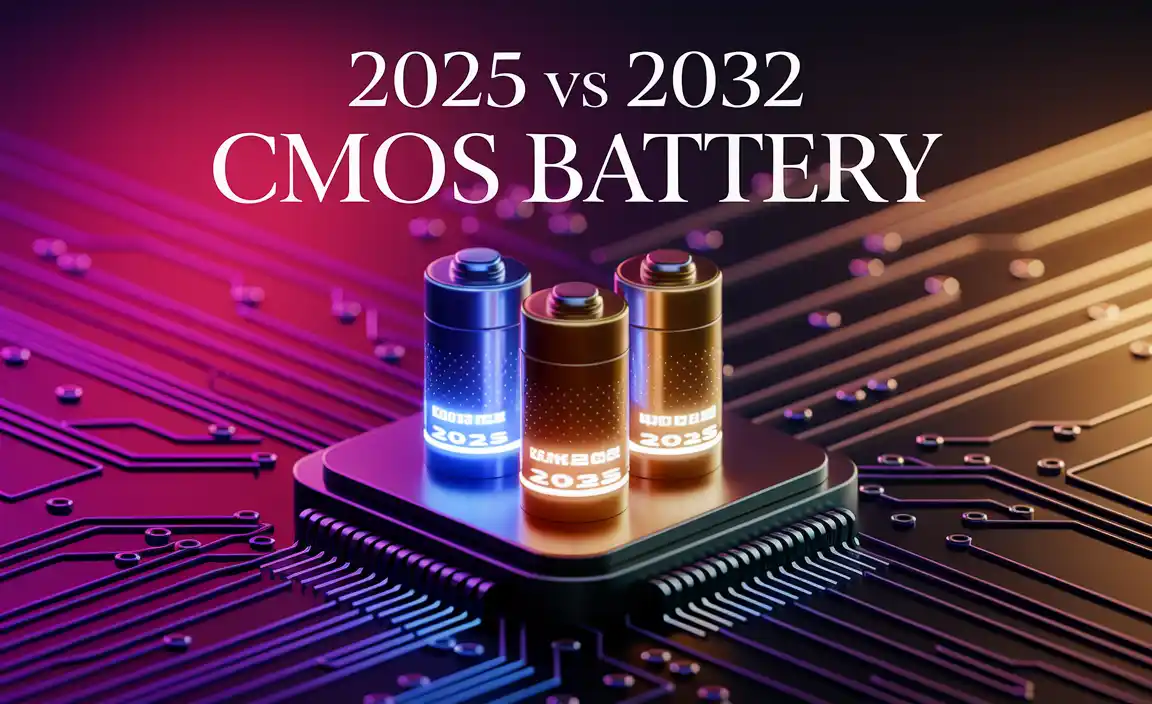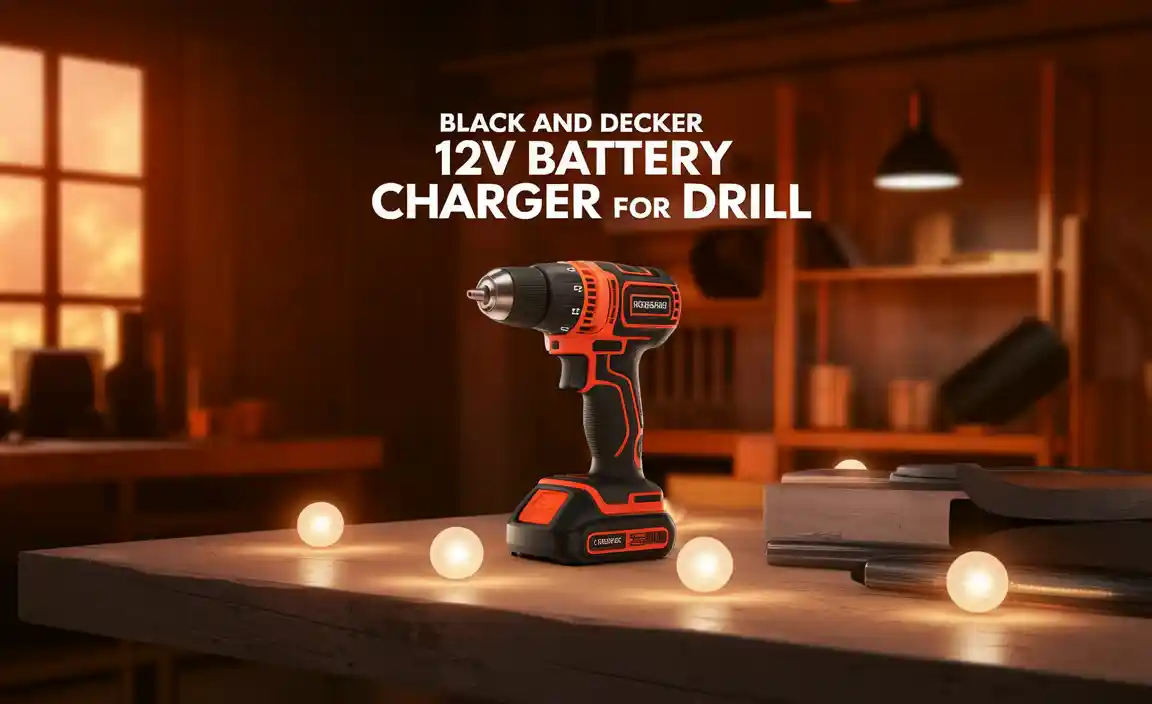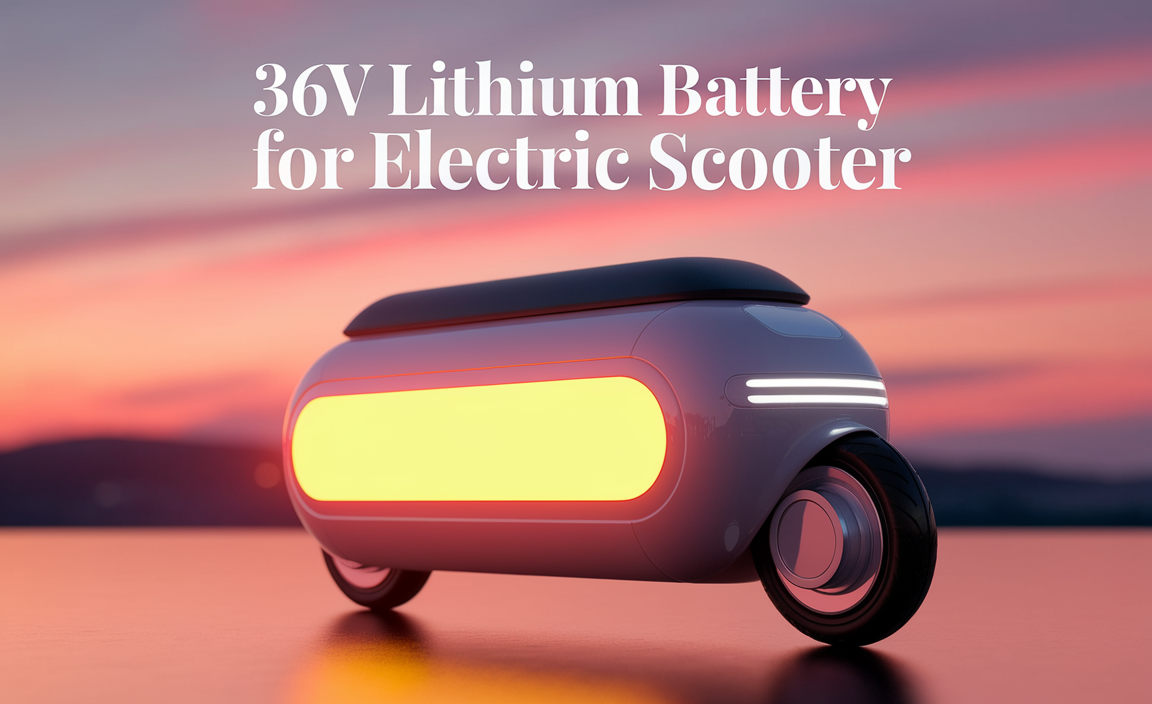Quick Summary: Upgrade your electric scooter with a sleek 60v 20ah lithium battery for significantly longer rides and better performance. This guide breaks down everything you need to know to choose, install, and care for this powerful upgrade, making your scooter experience smoother and more enjoyable.
Thinking about giving your electric scooter a serious boost? Maybe your current battery doesn’t last as long as you’d like, or perhaps you’re just ready for an upgrade that unlocks more power and range. It’s a common feeling among scooter enthusiasts! The good news is that a sleek 60v 20ah lithium battery can be a game-changer. This kind of upgrade can transform your rides, letting you explore further and tackle hills with more confidence. It might sound a bit technical, but I’m here to walk you through it step-by-step. We’ll cover what makes this battery special, why it’s a great choice, and how to make sure it’s the right fit for your scooter. Get ready to discover how to power up your adventures!
Why Choose a 60v 20ah Lithium Battery for Your Electric Scooter?
So, what’s the big deal about a 60v 20ah lithium battery for your electric scooter? It boils down to two key things: voltage (v) and amp-hours (ah). Think of voltage as the “oomph” or the force that pushes the electricity, and amp-hours as the “fuel tank” – how much energy it can store. A higher voltage generally means more power, which can translate to faster acceleration and better hill-climbing ability. The 20ah rating means it holds significantly more energy than smaller batteries, giving you a much longer range on a single charge.
Lithium-ion technology, which these batteries use, is also a big win. They’re lighter, last longer, and don’t suffer from the “memory effect” that older battery types could. This means you get more consistent performance over many charge cycles. For scooter riders who want to go further, enjoy more powerful rides, and depend on their scooter for longer trips, a 60v 20ah lithium battery is a top-tier upgrade.
Understanding the Specs: 60v vs. Other Voltages
You’ll see electric scooters running on various voltages, commonly 36v, 48v, and 52v, before jumping up to 60v. Each step up in voltage typically means:
- More Power: The motor can deliver more torque, helping you accelerate faster and climb steeper inclines more easily.
- Higher Top Speed: While not always the primary factor, a higher voltage can contribute to a higher potential top speed for your scooter.
- Potentially Better Efficiency: Sometimes, a higher voltage system can be more efficient at delivering power, though this depends on the motor and controller.
Understanding the Specs: 20ah vs. Other Amp-Hours
The amp-hour (ah) rating directly relates to the battery’s capacity, or how long it can supply power. A higher ‘ah’ means:
- Longer Range: This is the most significant benefit. A 20ah battery will take you much further on a single charge than a 10ah or 15ah battery, assuming all other factors are equal.
- Less Frequent Charging: You’ll spend less time tethered to a charger and more time riding.
- Heavier Battery: Generally, a higher capacity battery will be larger and heavier.
So, combining 60v and 20ah gives you a potent package designed for serious riders who demand performance and extended range. It’s like upgrading from a compact car to a sports sedan – the difference in capability is noticeable!
Is a 60v 20ah Lithium Battery Right for Your Scooter?
Before you jump into buying, it’s crucial to make sure this powerful battery is compatible with your electric scooter. Not all scooters are designed to handle the higher voltage and physical size of a 60v 20ah lithium battery. Here’s how to check:
Check Your Scooter’s Specifications
The first and most important step is to consult your scooter’s manual or the manufacturer’s website. Look for information on:
- Maximum Supported Voltage: Does your scooter’s motor controller and wiring system support 60 volts? Exceeding the voltage limit can permanently damage your scooter’s electronics.
- Battery Compartment Size: A 60v 20ah battery is typically larger and heavier than standard batteries. Measure the available space in your battery compartment to ensure it will physically fit.
- Controller Amperage Rating: While voltage is key, ensure your controller can handle the potential current draw from a more powerful battery. Manufacturers often specify this.
Consider Your Riding Needs
Ask yourself: why do you want this battery?
- Commuting: If you have a long daily commute, extended range is a huge advantage.
- Recreational Riding: Do you love taking long weekend rides exploring new areas? More range means more adventure.
- Performance: Are you looking for that extra kick for hills and speed? The 60v aspect can help here.
If you’re a casual rider who only goes a few miles at a time, a 60v 20ah battery might be overkill and add unnecessary weight and cost. However, if you crave more power and significantly longer rides, it’s likely a perfect match.
Physical Compatibility and Mounting
Batteries are not one-size-fits-all. You’ll need to consider:
- Dimensions: Measure the length, width, and height of your current battery and compare it to the specifications of the 60v 20ah battery you are considering.
- Weight: A 20ah battery will be heavier. Think about how this added weight might affect your scooter’s handling and portability (if you carry it).
- Connectors: Ensure the battery’s output connector matches your scooter’s input connector. Common types include XT60, XT90, or Anderson connectors. You might need an adapter if they don’t match.
Key Features of a Sleek 60v 20ah Lithium Battery
When shopping for a high-performance battery, certain features can make a big difference in usability, safety, and longevity. A “sleek” battery implies not just good looks but also smart design and advanced technology.
Battery Management System (BMS)
This is arguably the most critical component of a lithium battery pack. The BMS is like the battery’s brain. It protects the cells from:
- Overcharging: Prevents the battery from taking on too much energy, which can damage cells and pose a fire risk.
- Over-Discharging: Stops you from draining the battery too low, which can irreversibly harm the cells.
- Over-Current: Protects against drawing too much power too quickly, which can overheat and damage the battery.
- Short Circuits: Guards against dangerous electrical faults.
- Cell Balancing: Ensures all individual cells within the battery pack are charged and discharged evenly, maximizing lifespan and performance.
Look for batteries with a robust BMS that is specifically designed for the cell type and configuration. A good BMS is essential for safety and the long-term health of your battery.
Cell Quality and Brand
The actual lithium-ion cells inside the battery pack are like the heart cells. Reputable manufacturers often specify the type and brand of cells they use. High-quality cells from well-known brands like Samsung, LG, or Panasonic generally offer better performance, cycle life, and safety. Cheaper, unbranded cells might be more affordable initially but can lead to premature failure, inconsistent performance, or safety issues.
Durable Casing and Design
A “sleek” design often incorporates:
- Compact Form Factor: Designed to fit into specific scooter battery compartments without excessive bulk.
- Robust Enclosure: Made from durable materials like hard plastic or metal to protect the internal cells from shocks, vibrations, and the elements.
- Weather Resistance: Some batteries may have seals or coatings to offer a degree of protection against moisture and dust (check IP ratings if available).
- Integrated Mounting Points: Easy ways to secure the battery within the scooter.
Charging Port and Connector Type
Ensure the charging port is easily accessible and uses a common connector type that is compatible with available chargers. Similarly, the discharge connector (where the battery connects to the scooter) should be robust and match your scooter’s wiring harness.
How to Safely Install Your New 60v 20ah Battery
Installing a new battery is an exciting upgrade, but safety is paramount. Lithium batteries store a lot of energy, so it’s important to follow these steps carefully. If you’re not comfortable with basic electrical work, consider having a professional do the installation.
Gather Your Tools and Prepare
Before you start, ensure you have:
- Your new 60v 20ah lithium battery.
- Your electric scooter.
- Appropriate screwdrivers and wrenches to open your scooter’s battery compartment.
- A socket set if needed.
- Gloves and safety glasses for protection.
- A clean, dry workspace.
- The new battery’s charger.
Safety First: Always work in a well-lit, dry area. Avoid performing this installation on a damp surface or in rainy conditions. Make sure your scooter is turned off and the battery is disconnected from any load before you begin.
Step-by-Step Installation Guide
- Access the Battery Compartment: Locate your scooter’s battery compartment. This often involves removing a cover plate or panel secured by screws. Keep track of all screws and parts so you can reassemble everything correctly.
- Disconnect the Old Battery: Carefully identify the positive (+) and negative (-) terminals and connectors of your old battery. Most batteries will have quick-release connectors. Gently pull the connector straight out – do not twist or use excessive force. Ensure the scooter’s wiring harness is safely out of the way.
- Remove the Old Battery: Once disconnected, lift the old battery out of its compartment. Batteries can be heavy, so be prepared. Place the old battery aside safely.
- Install the New Battery: Carefully place the new 60v 20ah lithium battery into the compartment. Ensure it fits snugly and securely. If your old battery had a metal bracket or foam padding, you might need to use these with the new battery to keep it from shifting. Make sure the battery is oriented correctly so its connectors are accessible.
- Connect the New Battery: Align the connectors on the new battery with the corresponding connectors on your scooter’s wiring harness. Push them together firmly until they click or are fully seated. Double-check that the positive (+) connector is matched with the positive wire and negative (-) with negative. Incorrect polarity can cause severe damage.
- Secure the Battery Compartment: Once connections are confirmed, carefully reattach the cover panel or battery compartment lid, ensuring all screws are tightened securely.
- Initial Charge: Before your first long ride, it’s a good practice to fully charge the new battery using its dedicated charger. Connect the charger to the battery’s charging port and plug it into a power outlet. Refer to your battery’s manual for recommended charging times and indicators. For more on charging, check out resources from the U.S. Department of Energy on battery charging best practices.
Important Safety Precautions
- Never force connectors. If they don’t align easily, something is wrong.
- Always verify polarity (+ and -). Reversing it can destroy electronics.
- Keep the battery away from water during installation and operation.
- Do not modify the battery pack itself. This will void warranties and can be dangerous.
- If at any point you feel unsure, stop and seek professional help.
Charging and Maintenance for Longevity
To get the most out of your sleek 60v 20ah lithium battery and ensure it lasts for years, proper charging and maintenance are key. Lithium-ion batteries are relatively low maintenance compared to older types, but following best practices will maximize their lifespan and performance.
The Right Charger is Crucial
Using the correct charger is non-negotiable. A charger must match the battery’s voltage (60v in this case) and have the appropriate current output (amperage). Using an incorrect charger can:
- Damage the battery: An underpowered charger will take too long and may not fully charge; an overpowered charger can overheat and damage cells.
- Compromise safety: Improper charging is a leading cause of battery failures and potential hazards.
Most new 60v 20ah batteries come with a compatible charger. If you need a replacement, ensure it’s specifically designed for 60v lithium-ion batteries and has a similar amperage rating to the original. Aim for a charger that balances charge speed with battery health – often a 2-5 amp charger is a good balance for a 20ah battery.
Best Practices for Charging
- Charge after every few rides: Lithium batteries are happiest when not consistently fully discharged or left fully charged for extended periods. Aim to top them up regularly.
- Avoid deep discharges: Try not to drain the battery completely. Most scooters have a low-voltage cutoff, but it’s good practice to keep an eye on your battery percentage.
- Charge in a cool, dry place: Avoid charging in extreme heat or direct sunlight, as this can stress the battery.
- Unplug when full: While most modern chargers have auto-shutoff, it’s good practice to unplug the charger once the battery is fully charged. Leaving it plugged in for days on end, even if it shows fully charged, can put a slight, continuous strain on the cells.
- Do not charge immediately after a hard ride: Let the battery cool down for 15-30 minutes after heavy use before plugging it in.
Storage Recommendations
If you need to store your scooter (and its battery) for an extended period (e.g., over winter), follow these tips:
- Store at 40-60% charge: This is the ideal storage state for lithium-ion batteries. Storing them fully charged or fully depleted for long periods can degrade them faster.
- Cool and dry location: Store the battery in a temperature-controlled environment, away from direct sunlight and moisture.
- Check periodically: If storing for many months, it’s a good idea to check the charge level every 2-3 months and top it up if it drops significantly.
What to Avoid
- Using the wrong charger.
- Charging in extreme temperatures (hot or cold).
- Leaving the battery in a dead or fully charged state for weeks.
- Exposing the battery to water or significant physical impact.
- Opening or modifying the battery pack.
By following these simple maintenance steps, you can significantly extend the life of your 60v 20ah lithium battery and ensure it performs reliably ride after ride.
Comparing Battery Options
When looking for a power upgrade, understanding the landscape of battery types and capacities helps. While we’re focusing on the 60v 20ah lithium option, it’s useful to see how it fits in. This also highlights why lithium is the modern standard.
Lithium-ion vs. Older Technologies
Older electric vehicles and scooters often used Lead-Acid batteries. Here’s a quick comparison:
| Feature | Lithium-ion | Lead-Acid |
|---|---|---|
| Weight | Much lighter | Very heavy |
| Energy Density | High (more power/capacity for size) | Low |
| Lifespan (Cycles) | 500-2000+ | 200-500 |
| Maintenance | Virtually none | Requires watering (if applicable), cleaning terminals |
| Cost (Initial) | Higher | Lower |
| Performance Consistency | Excellent; voltage stays stable |
|





